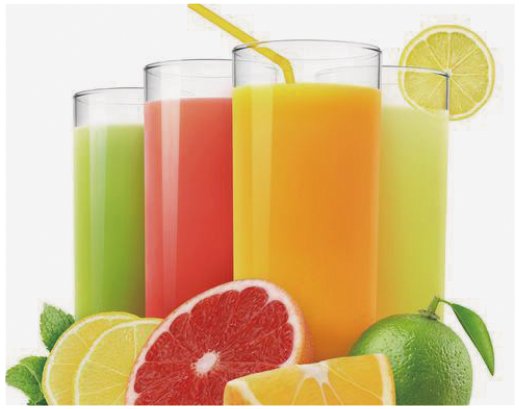Silica sol for drinking food adsorbents
#Application ·2025-08-21 16:46:13

In the food industry, the safety, adsorption efficiency and stability of adsorbents are core requirements. Silica sol, with its inorganic nature, non-toxicity, high specific surface area and excellent adsorption performance, has become an important raw material or carrier for special adsorbents in the field of drinking food. The following is a detailed introduction from aspects such as its characteristics, application scenarios, mechanism of action and advantages.
I. Core Characteristics of Silica sol Specifically designed for Drinking Food Adsorbents
The dedicated silica sol for drinking food adsorbents is mainly composed of nano-scale silica (SiO₂) and is prepared through a special process. It needs to meet food-grade safety standards (such as compliance with FDA, GB 29216 and other regulations), and its core characteristics are highly compatible with the demands of the food industry.
- Excellent safety: It only contains SiO₂ and water, without harmful substances such as heavy metals and organic residues. SiO₂ itself is an additive permitted in the food industry (such as anti-caking agents), and it is not absorbed by the human body after oral intake and can be safely excreted.
- High specific surface area and porous structure: After drying, the colloid formed by nano-SiO ₂ particles (with a particle size typically ranging from 10 to 50nm) will accumulate into a porous network structure, with a specific surface area of up to 100 to 600 m²/g, providing sufficient active sites for adsorption.
- Strong surface activity: The particle surface is rich in hydroxyl groups (-OH), which can adsorb polar or non-polar substances through hydrogen bonds, van der Waals forces and other actions, and has high selectivity for small molecule impurities in food (such as pigments and odorous substances).
- Good stability: It remains stable within the pH range (typically 3-9) and temperature range (0-100℃) of food processing, does not dissolve, does not release harmful substances, and does not undergo chemical reactions with food components such as proteins and carbohydrates.
Ii. Specific Applications in Drinking Food Adsorbents
The adsorption application of silica sol in the field of drinking food mainly relies on its directional adsorption capacity for impurities, pollutants or specific components. Common scenarios include:
1. Drinking water purification adsorbent
In drinking water treatment, silica sol can serve as a core adsorption component to remove trace pollutants from water.
- Removal of organic matter: Adsorb natural organic matter in water (such as humic acid, fulvic acid), pesticide residues (such as organophosphorus, pyrethroids), and disinfection by-products (such as chloroform). Through the physical adsorption of the porous structure and the chemical combination of surface hydroxyl groups, reduce the organic matter content to a safety standard (such as TOC < 5 mg/L).
- Removal of heavy metals: For heavy metal ions such as lead, cadmium and mercury in water, the hydroxyl groups on the surface of silica sol can adsorb them through ion exchange or chelation, with an adsorption capacity of 50-200 mg/g, meeting the heavy metal limit requirements for drinking water (such as lead < 0.01 mg/L).
- Improve taste: Absorb odorous substances in water (such as algae metabolites and sulfides), enhance the palatability of drinking water, and do not affect beneficial minerals in water (such as calcium and magnesium ions).
2. Decolorization and deodorization in food processing
In the processing of food products such as fruit juice, alcoholic beverages, and condiments, silica sol is often used as a decolorizing and deodorizing agent.
- Juice clarification and decolorization: The pigments (such as anthocyanins and carotenoids) and colloidal impurities contained in juice (such as apple juice and grape juice) can be adsorbed by the porous structure of silica sol without destroying the nutritional components (such as vitamin C) of the juice, thereby increasing the light transmittance of the juice by 30% to 50%.
- Alcohol purification: Fusel oil, aldehyde substances (causing pungent taste) and turbidity that may exist in Baijiu and beer can be selectively adsorbed by silica sol, reducing off-flavors and improving the clarity of the alcohol without affecting the flavor substances of the alcohol (such as esters).
- Purification of condiments: In fermented foods such as soy sauce and vinegar, silica sol can adsorb brown pigments and odorous substances produced during the fermentation process, improving the color and taste of the products, while reducing the impact of impurities on the shelf life.
3. Purification and refinement of food additives
In the production of food additives (such as sweeteners and preservatives), silica sol is used to remove impurities from raw materials
- In the purification of sugar products: During the production of sucrose and glucose, silica sol can adsorb impurities such as pigments (like melanin) and proteins in the sugar solution, replacing traditional activated carbon (to avoid carbon powder residue), and improving the purity and whiteness of sugar.
- Food-grade oil purification: Free fatty acids, peroxides and odorous substances contained in vegetable oil and animal oil can be adsorbed by silica sol, extending the shelf life of the oil. Moreover, after adsorption, the silica sol can be easily removed through filtration and will not remain in the oil.
4. Food preservation and deaeration adsorption
Silica sol can be combined with other components to make adsorbents for food preservation:
- Deaeration adsorption: Combined with iron powder, activated carbon, etc., silica sol serves as the carrier to disperse active ingredients. Through its porous structure, it accelerates oxygen diffusion, enhances deaeration efficiency, and extends the shelf life of food (such as pastries, nuts).
- Moisture-proof and adsorption: Its porous structure can absorb trace amounts of moisture inside food packaging, reduce humidity, prevent food from getting moldy (such as bread and biscuits), and the structure remains stable after absorbing moisture, without liquefaction.
Iii. Mechanism of Action: How to Achieve Efficient Directional Adsorption?
The core mechanism of silica sol adsorption in drinking food includes the synergistic effect of physical adsorption and chemical adsorption:
-
Physical adsorption: "Sieving and Retention" of Porous Structures
The porous network formed after the drying of silica sol has pore diameters ranging from 2 to 50nm and can selectively adsorb according to molecular size: small-molecule impurities (such as pigment molecules and organic pollutants) can enter the interior of the pores and be adsorbed through van der Waals forces. However, the macromolecular nutrients in food (such as proteins and starches) are large in size and cannot enter the pores, thus achieving "impurity adsorption and nutrient retention". -
Chemical adsorption: "Targeted binding" of surface hydroxyl groups
The hydroxyl groups (-OH) on the surface of silica sol can undergo chemical reactions with specific substances:- For polar molecules (such as heavy metal ions and organic acids) : stable bonds are formed through hydrogen bonds or ion exchange (-Si-OH + mion ⁺ → -Si-O-M⁽ ion ⁻¹⁾⁺ + H⁺);
- For non-polar molecules (such as liposoluble odor substances) : Adsorption is achieved through hydrophobic interaction, and the adsorbed substances are not easily desorbed, ensuring the purification effect.
Tags:





